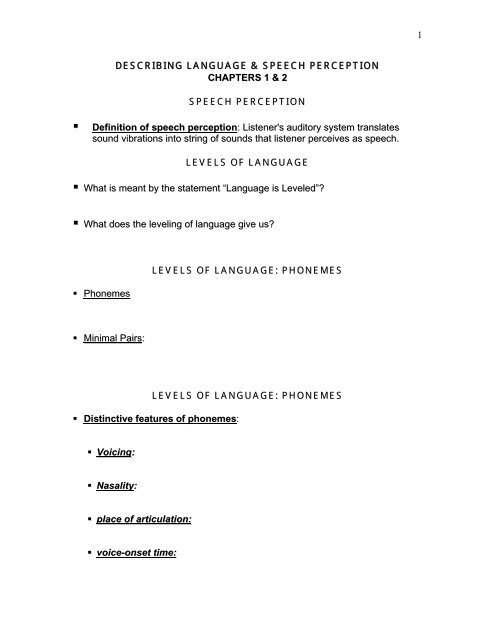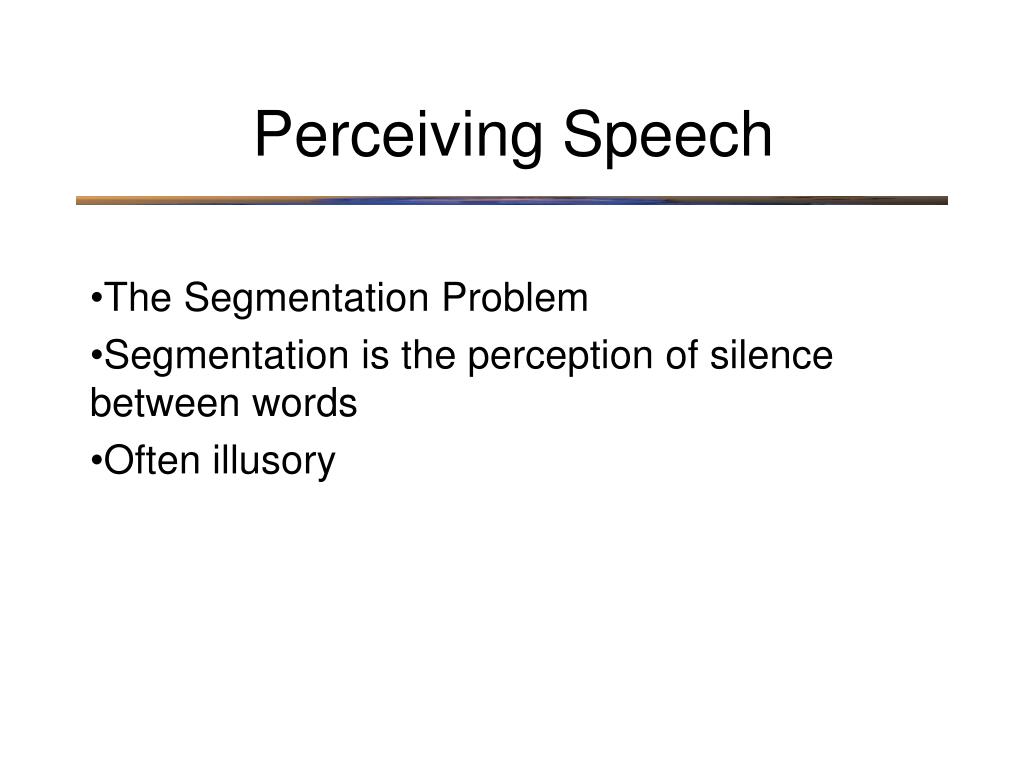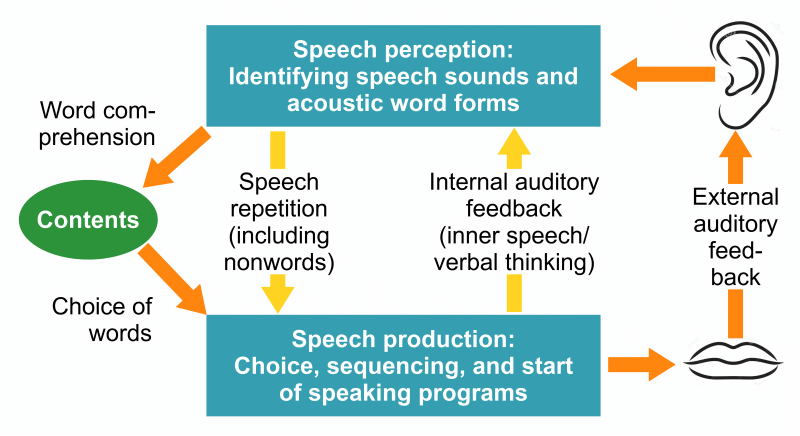
Places of articulation for different consonants). Involve a rush of air through a near-constriction (with different That is, there is a brief silence, visible as a Stop consonants are visible as a complete cessation of airflow, and This is what makes the formants different for each voxel sound. But, the manner of articulation (how you shape your tongue and lips) results in a filtering of the sound.

Speech perception definition series#
This voicing is visible in spectrograms as a series of thin, horizontal bands corresponding to the separate harmonics. For such sounds, the vocal cords are vibrating, producing a fundamental frequency, and the sound consists of that fundamental frequency along with harmomincs (integer multiples of of the fundamental frequency). Vowel sounds are voiced, as well as some consonants that are extended in time (m, n, z, zh, v, etc.). However, certain of the phoneticįeatures discussed above are easily visible in spectrograms. "read" the speech in spectrograms, although this turns out to be anĮxtraordinarily difficult task. People have even attempted to train themselves to

Many of the phonetic distinctions discussed above are This is very similar to the processing done by Spectrogram indicates the amplitude of that frequency band (specifiedīy the vertical position) at that time (specified by the horizontal The intensity displayed at any point in a sound Other consonant sounds include the laterals (l/r), glides (y/w), and nasals (m/n).Ī spectrogram is a graph of frequency vs. The voiced fricatives/sibilants can be sung, as they have a well-defined pitch defined by the vibrations of the vocal chords. Again, the two sounds in each pair differ as to whether they are voiced (v/z/zh) or not. Included are f/v, s/z, and sh/zh (hush vs. These involve an incomplete closure of the air stream, resulting in a noisy rush of air through a small opening. Another major class of consonants includes the fricatives and sibilants. The two consonants in each pair differ in their voicing (b/d/g are voiced: the vocal chords vibrate as soon as the air is released). Each pair in that list differs from the next in the place of articulation, i.e., where the air constriction occurs (between the lips, tongue to teeth, or tongue to soft palate).

These include the English consonants p/b, t/d, k/hard-g. There are many different kinds of consonants, depending on the wayĬonsonants (or plosives) involve a complete closure of the air stream, followed by an explosive release of air. Smoothly in succession, known as a diphthong (e.g., the sound "ou" as in "house", which consists of "ah" followed by long "oo"). Vowels is that some sounds involve a pair of vowel sounds pronounced Require the mouth to be wide open, or for the lips to be closed and Used in pronouncing the particular vowel sound (high, mid or low in the Specifies the position of the highest part of the tongue in the mouth Vowels are described based on two main distinctions. All vowels are voiced, meaning that the vocalĬords vibrate while producing the sound, so that the sound has a The primary distinction is between vowels (produced with no airĬonstriction) and consonants (which involve a partial or totalĬonstriction of air flow). Phonemes are characterized primarily by the manner in which the sounds are produced. Finally, phonemes correspond to produced speech sounds (although the correspondence is complicated, and is studied by phonologists and phoneticians). For example, the "i" sound in "hit" is a phoneme, because if you change it to "a" you get "hat". Phonemes are defined as the smallest unit that, if changed, can potentially change the word's meaning. Next, each morpheme can be split into a sequence of sounds, called phonemes.
Speech perception definition plus#
"childhood" consists of "child" (young person) plus "hood" (the state However, words canĬonsist of more than one meaning-containing segment. Typically the thing you write surrounded by spaces. The largest orthographic unit in English is the word, which you might think of as Spoken languages consist of a sequence ofĭiscrete objects. Understand something about speech perception, one must begin with theĮlements of speech itself.

We could have an entire course on this topic. Don't have time to cover all of that material. Some of that is reviewed in your textbook (which you should read). There is a lot more to know/learn about speech perception and language understanding. Percpetion Lecture Notes: Speech Perception Perception Lecture Notes: Cochlear Implants and Speech Perception Professor David Heeger What you should know from this lecture


 0 kommentar(er)
0 kommentar(er)
